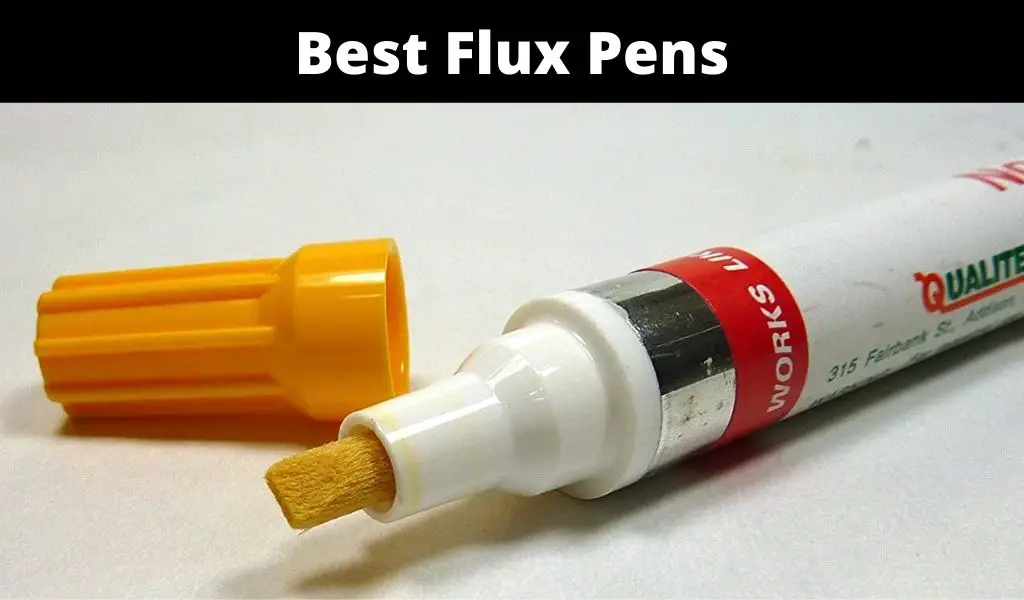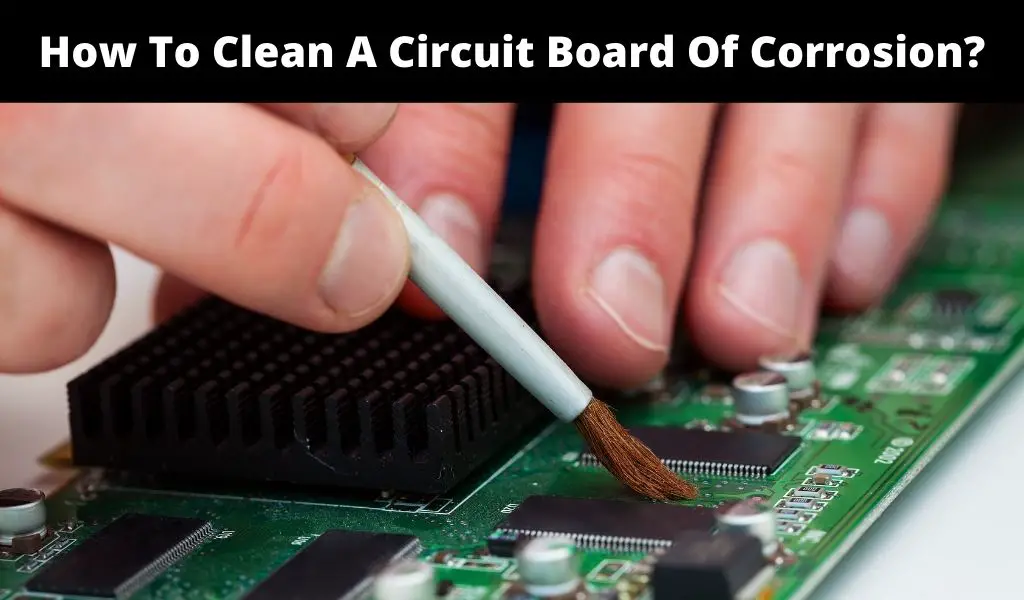Yes! You can solder without flux. However, it’s not advisable to do so due to the benefits offered by flux during soldering.
However, it’s worth knowing that some types of solder are sold with flux in them. If you are using solder filled with flux inside, you don’t need to buy flux separately. Here’s a discussion of the benefits of flux when soldering before listing the alternatives.
Why is Flux Important? Benefits of Flux in Soldering Applications
Solder flux plays crucial roles in the soldering process. Flux is critical in achieving a perfect bond. In soldering applications, flux can be described as a chemical cleaning, flowing, or purifying compound. It is activated by heat in the soldering process. Flux plays numerous roles. First and foremost, it gets rid of any oxidation on metal pieces being joined together. This ensures the solder wets the base metal creating a perfect/stronger joint.
Flux also acts as a “glue”. As the soldering iron melts the solder, flux flows and acts partly like a glue that sticks the metal pieces together. Flux also works as a cleaning agent before the soldering process. This is particularly the case in electronic soldering applications.
Main Types of Flux
While flux is important for soldering, not all flux is ideal for all soldering applications. In fact, you should consider the type of flux you are using. To make the right choice, you should understand the different types of flux for soldering. Here are the most common types;
I. Rosin Flux
This type of flux is the oldest and most common. It is composed of natural resin from pine tree oleoresin. Modern Rosin Flux is refined and usually blended with other fluxes. It has notable characteristics such as free-flowing in hot conditions. This property makes Rosin flux perfect for removing oxides quickly. Rosin Flux also removes foreign particles effectively from metals being soldered.
Rosin flux is acidic as a liquid but solid and inert when cool. This property makes it perfect for circuit board soldering applications since it won’t harm circuitry unless it heats and melts. Provided excess flux is removed after soldering, it is a perfect flux for circuitry applications.
II. Organic Acid Flux
This type of flux is composed of organic materials apart from rosin or resin. Organic acid flux is water-soluble. The flux features weak acids such as lactic, citric, and stearic acids. The flux is stronger and quicker than rosin flux in cleaning oxides. What’s more, it can solder perfectly with flux activity making it easier when cleaning a work site. OA flux is, therefore, a perfect Rosin flux alternative for individuals in need of more speed and strength.
III. Inorganic Acid Flux
This type of flux works best when soldering stronger metals like stainless steel, brass, and copper. However, you must clean surfaces thoroughly to eliminate corrosive residue. Doing this will achieve a strong and perfect joint.
Generally, soldering with the wrong kind of flux is as bad as soldering without using flux. While you should purpose to solder with flux to enjoy the benefits discussed above, it’s also important to choose the right flux for your application.
Using Solder Flux
You can also use the right flux and get a bad outcome. How you use solder flux is also as important as the type of flux you use. Flux is usually sold as a paste in a tin, can, or jar. It can also be sold as a liquid in a bottle. Organic flux is generally used for many applications. However, inorganic acid-based flux can also be utilized for non-electrical applications.
Ideally, you should use inorganic flux for soldering or brazing applications. However, the flux can contain organic compounds that activate at high temperatures. For a step-by-step guide on how to use solder flux, here’s what you should know;
Step 1: Clean Your Workpieces
You can solder with the right flux. However, if you use dirty workpieces, your outcome will be compromised. Workpieces should be cleaned using a solvent before flux is applied. This step removes dust, grime, and excessive oxidation.
Step 2: Apply Even Flux Coat
After cleaning, apply your even flux coat on the workpieces being soldered together. The application should be done in the area to be soldered. It should also be done when you are ready to start soldering i.e. when the soldering iron is ready.
Step 3: Soldering
When soldering, the flux should be melted and spread to cover the metal workpieces. Doing this removes oxidation. For effective soldering, the process should be completed quickly before oxidation happens again. Excess flux should also be wiped to avoid corrosion. However, this should be done gently.
Alternatives to Flux
Can you solder without flux? Yes! However, it’s not advisable to do so unless your solder already has flux in it or you have an effective alternative. Generally, the role of flux can be taken over by several alternatives. They include;
I. Petroleum Jelly
Petroleum jelly is a notable alternative to flux when soldering. It stands out for many things ranging from availability to effectiveness is doing what typical flux does. Every household has petroleum jelly. The jelly also has waxes and oils that make it non-corrosive, so you can solder without worrying about damaging the workpieces.
Petroleum jelly is also good for removing grime and dirt. Most importantly, it can also eliminate metal oxides that are known to weaken soldered bonds. Generally, petroleum jelly works like commercial soldering flux (if not better). Other notable advantages include cost benefits. Petroleum jelly is cheaper and will melt faster when exposed to heat from a soldering iron. It is also safe for many soldering applications.
2. Lemon Juice
If you don’t have petroleum jelly or would prefer to use something else, there are other flux alternatives to consider. As stated, petroleum jelly isn’t ideal for every single soldering application. Luckily, there are other commercial flux alternatives to consider, such as lemon juice.
You can use some fresh lemons to extract lemon juice and use it as acidic DIY (Do-It-Yourself) flux. This flux alternative works perfectly since it is rich in citric acid, which is effective in many ways, from clearing metal oxides to getting rid of other impurities or dirt that may be present in workpieces. Lemons are also readily available for quick soldering applications.
However, lemon juice has some cons when used as an acidic flux. For instance, it can be a costly flux when used in largescale soldering applications. For smaller soldering jobs, one lemon or less is more than enough.
It may also be a tedious and messy job extracting lemon juice. To make the flux, you must cut and strain lemons removing the pulp, seeds, skin, etc. You’ll also need to stir the juice and strain it several times to get the final flux. Also, the best lemon juice flux is fresh. Refrigerating lemon juice can reduce its flux properties.
3. Pine Tar Flux
You can also prepare pine tar flux at home and use it as a homemade alternative for commercial flux. This alternative makes more sense if you have pine trees in your home or local area. You need pinecones to prepare pine tar flux. The flux is made from tar in pinecones as the main ingredient.
To make pine tar flux at home, start by collecting some pinecones. Proceed and remove the leaves and place the pinecones in a bowl or container. Add denatured ethyl alcohol carefully to avoid spilling, and cover your container using a lid. Allow the contents to mix for 8-12 hours.
The denatured ethyl alcohol works by dissolving the pine tar. Strain the resulting mixture and remove any leaves or other debris that is present. Your pine tar flux is ready for use.
While pine tar flux is a viable and effective commercial soldering flux alternative, the process of making this flux is obviously lengthy and potentially challenging. Pine tar flux is also a viable alternative is you have access to pine cones. If you have time and the raw materials, you can make this flux ahead of time.
4. DIY Rosin Flux
You can also make your own Rosin flux at home. Rosin made using crystallized colophony has multiple uses ranging from improving the grip. In fact, crystallized colophony is used in making commercial flux. If you have access to the raw material, DIY Rosin flux is another notable flux alternative.
Conclusion
Yes! It’s not a must to use flux when soldering. However, to get a perfect outcome, flux is important. The benefits of flux range from removing oxidation to cleaning workpieces before soldering. Flux also works like glue. Generally, flux results in higher-quality soldered joints. Unless you are making a small insignificant soldered joint, the flux should be used.
Considering the benefits and availability of flux alternatives, there is no reason to solder without using flux. You can use the DIY flux discussed above to work like commercial flux. As long as you can access the raw materials, most flux alternatives discussed above will work perfectly.






